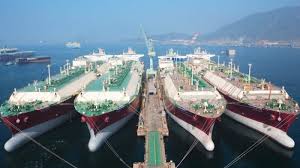
LNG
Image: shell.com
Oil and gas executive Levon Termendzhyan serves as the equity owner of Viscon USA, is connected to two major oil companies in the US, and handles energy-related matters on behalf of various Native American tribes. Dedicated to promoting clean air, Levon Termendzhyan has been involved in the liquefied natural gas (LNG) market around the world.
Although public perception of LNG is plagued with ideas of extreme danger and toxicity, the fuel is actually one of the safest of all common fuel types. There have been no significant losses of cargo, fuel spills, or environmental incidents since the market began shipping bulk quantities of LNG in the 1960s. Since that time, LNG container ships have safely completed more than 33,000 voyages and traveled upwards of 60 million miles over the sea.
Part of the LNG market’s top safety history is due to the fact that LNG itself is actually not harmful to ground or water, thanks to its naturally rapid vaporization. When a spill does occur, the liquid gas rapidly evaporates without leaving behind any residue. This means it does not harm waterways or aquatic life like a crude oil spill does. The fumes created by the gas are flammable, but will only ignite when exposed to an ignition source. Without this, the gas will dissipate entirely on its own.
Once stored, safety systems at LNG facilities prevent major catastrophes from occurring. These systems include vapor and fire suppression systems, gas detectors, and temperature sensors. All LNG facility operators must also create detailed operating procedures that promote safety and adhere to federal regulations before operations can begin. In addition, personnel must complete training in firefighting, maintenance, and security.
You must be logged in to post a comment.